Ceremonial Grade Cacao is Ceremony's Subversion (Modern Farmer)
What happens to ceremony when ceremonial tools can be packaged, promoted and sold in the same way as a candy bar?
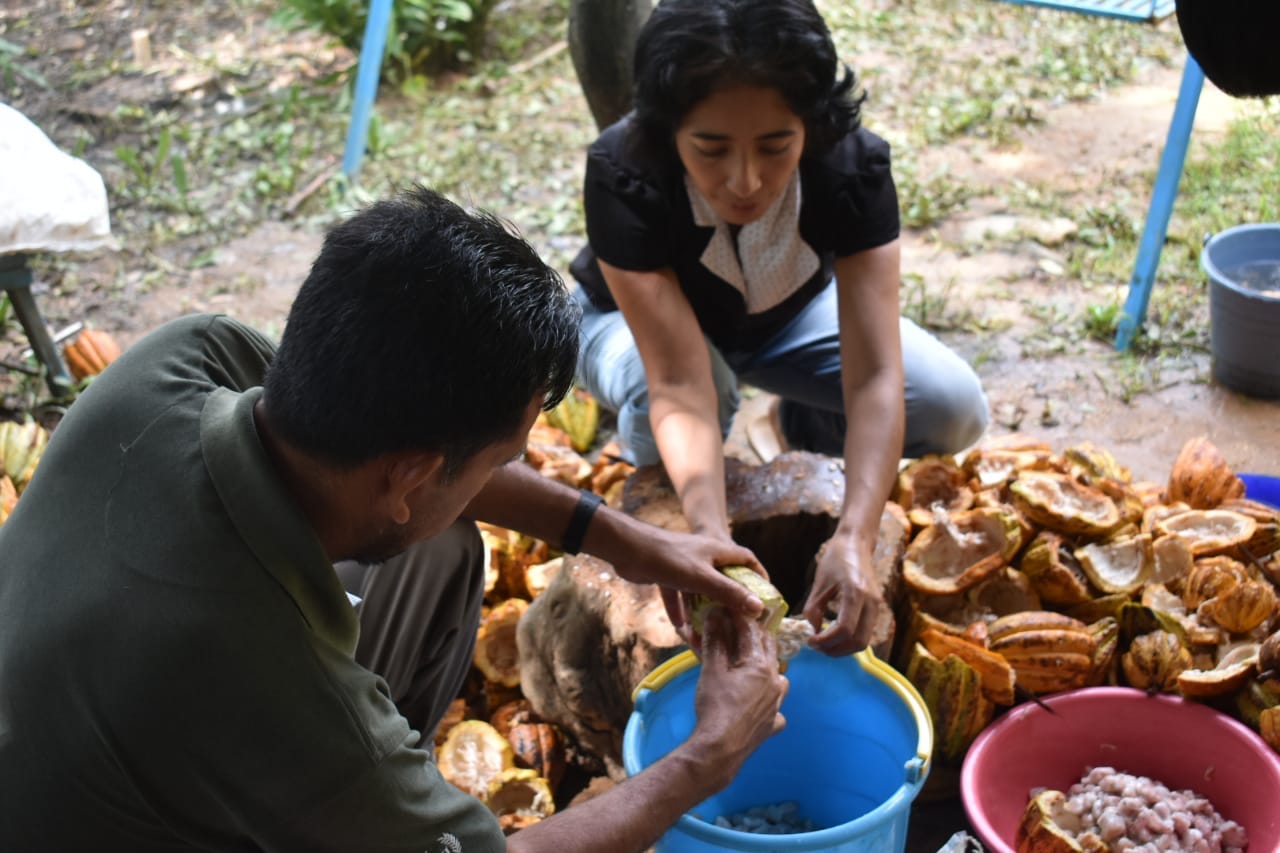
In 2014, during a short stay on the shores of Lake Atitlan, Guatemala, walking along a dirt road, I came across a poster for an upcoming event stapled to a telephone pole. It read of a “cacao ceremony” that same weekend. Being a card-carrying member of the ceremonially starved, I immediately signed up.
Alongside some 30 other, mostly twenty-something tourists and expats, we gathered on a Sunday afternoon in the solarium of the house of a “cacao shaman.” After an hour and a half, we were each served a plastic cup of room-temperature, “ceremonial grade cacao” or drinking chocolate. The sharp bitterness was shorn with a drop of honey, and we were given the option to add chili (“to accelerate the effects”) or vervain (“to open up the third eye”). Looking around the room nervously, I said my prayers and drank the brew. Together, for the next three hours, we then sat in a guided meditation.
At the time, these ceremonies were few and far between, existing well beyond the periphery of the subcultural spectacle. In the years since, both dark and bean-to-bar chocolate have surged into the mainstream. Cacao ceremonies followed, exploding in popularity. Today, you can find advertisements for these gatherings pasted and posted above “ceremonial grade cacao” products in juice bars, yoga studios, and hippie enclaves the world over.
Today, marriages, deaths, birthdays, and adulthood itself are churned out through the meat grinder of monetized, modern entitlement. While few would compare cacao ceremonies to the coming-of-age rituals today, industry reduces most ceremonies to “services” rendered. The standardization of offerings outsources our place as ritual participants, reducing kin to mere spectators or clients. The unannounced etiquette of the event ensures that nobody goes “off script.” In this sense, modern ceremony is, at its worst, entertainment; at its best, it’s a hint of what ceremony could serve.
I say this as someone who has worked hundreds of such events over the years. Attend a wedding in Los Angeles and later in Paris and the architecture barely changes.
And so, when the ceremonies themselves arrive pre-packaged, profit-driven, and easily cloned, it should be no surprise that the accompanying ceremonial tools and techniques follow suit. The ingredients, their preparation, and the food all contribute to the disappearance of ceremony, rather than the ceremony’s deepening. Cacao ceremonies are no different. They recapitulate the spiritual poverty they try to reduce by refusing to acknowledge the modern lineage from which they derive.
The Old Understanding
As part of my vocation here in Oaxaca, Mexico, I offer storytelling “sessions” about cacao and maize. The region is home to a millennia-old chocolate culture and, as such, tourists have begun to arrive, searching out the rumour of old ways. Countless clients have asked me if I “do” (i.e., as in “offer”) cacao ceremonies, and countless more inquire after where they can find “ceremonial grade cacao.”
In each instance, I carefully invite the possibility that both modern cacao ceremonies and “ceremonial grade” cacao are counterfeit. They’re not without value, but they’re pretending to be something they’re not. Within these modern gatherings, the ceremony is typically held and carried out for the individuals who attend. In their manner of advertising both the ceremony and the cacao as “authentic,” “ancestral,” “traditional” or “pre-hispanic,” modern people end up doing to ceremony what “organic” and “fair trade” have done to farming. Together, they take the cumulative intergenerational devotion that our ancestors had to land and culture and try to siphon it through the pinhole of modern consumerism and government regulations. Unaware, what filters through is, at best, a mere shell of the tradition they tout as their own.
The ancestral ceremonies, the ones still being practised in some of the villages of southern Mexico and beyond, bear little resemblance to the New Age rituals and retreats of urban anywhere.
Among the people I’ve met who faithfully undertake old-time ceremonializing, most understand their work to be, first and foremost, for the unseen, for the more-than-human world—not for the individual, but for the community and all that keeps it upright. Their offerings are laid down for what, today, is most deeply at risk of slipping from view entirely. Traditionally, ceremony is invoked in order so that life may continue, in the face of its possible disappearance. A ceremony doesn’t suddenly arise just because someone advertises it online and people show up and incense is burnt or a bell is rung.
The more we wax poetic about community and ceremony, instead of wondering what has become of each, the more we undermine the possibility of their emergence among us. The more we use those terms in place of the real thing, the further into the ether they fade, making it exponentially more difficult for anyone who comes after us to remember ceremony’s function, let alone architecture, in a living culture.
The Greenwashing
“Ceremonial grade” cacao arrives and operates as ceremony’s subversion. Cacao is both a tree that houses unprocessed seed matter, while chocolate is (at least) cacao seed that has been ground into either food or drink. It’s extremely misleading when chocolate makers attempt to sell ground chocolate as “cacao,” perhaps to set it apart from the pack, from the thing it veritably is, which is chocolate.
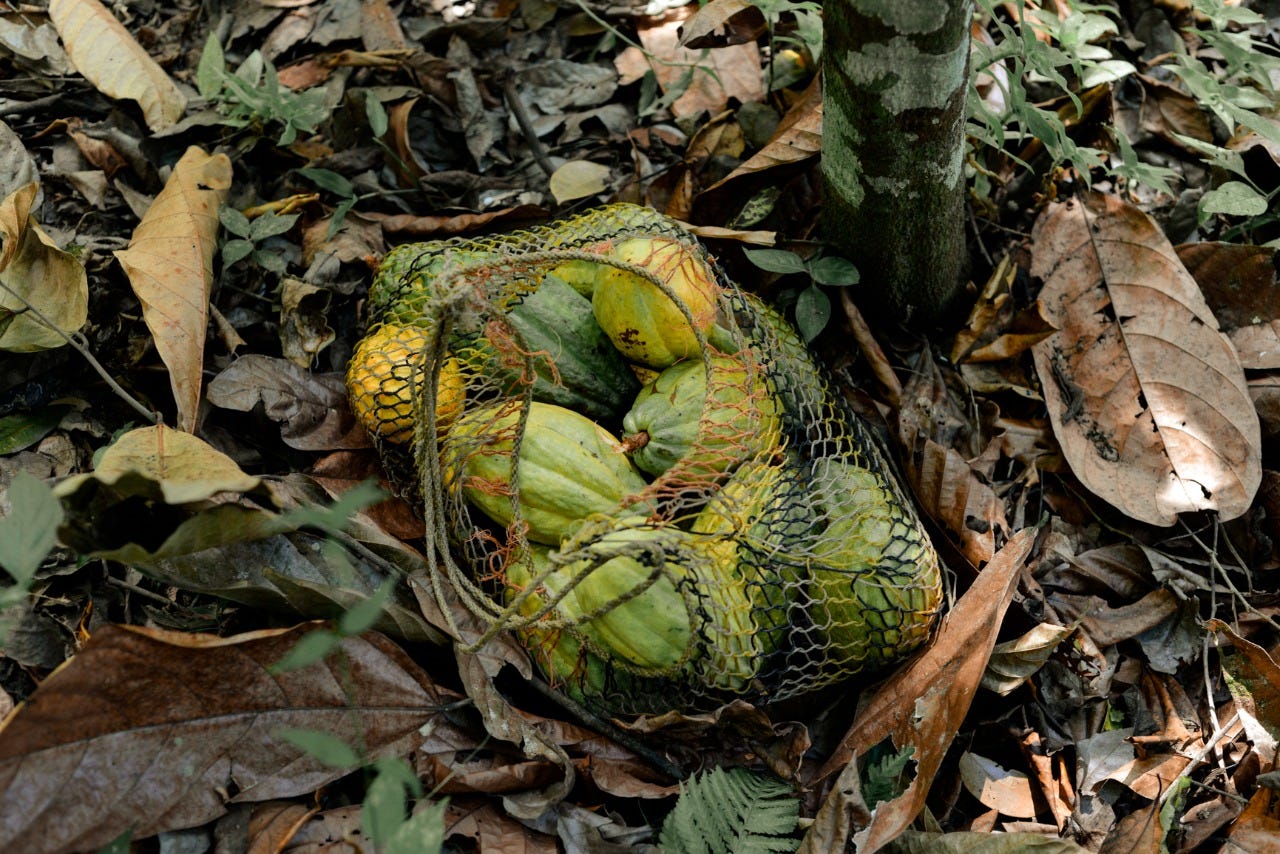
We can wonder, then, why we don’t see dry pasta noodles marketed strictly as “wheat?” Why isn’t polenta simply sold as “corn” or burger patties exclusively as “beef?” While packaged food almost always has a list of ingredients displayed, it is rarely, if ever, promoted and sold as a list of ingredients. In this light, we can consider that there is no such thing as “ceremonial grade” cacao. There is only cacao that is used for ceremony and cacao that is not.
For those selling ceremonial-grade cacao, there are specific attributes that warrant the title. These include using high-quality cacao beans, often with varietals of a single origin, sourced directly from well-paid farmers who undertake regenerative farming techniques and who are master fermenters. Coincidentally, most chocolate makers (within the European tradition) also consider these things as prerequisites for the highest standard of fine chocolate. And yet, do their foods not qualify as ceremonial? If their supply chain and production processes check off all the above boxes, shouldn’t they, too, have the right to slap the “ceremonial” sticker onto their bars? The question then begs being asked: What makes this chocolate “ceremonial” in the first place?
Let’s assume for a moment that there are old, equatorial forests in which high-quality cacao is grown for ceremonial purposes. This doesn’t mean that their stewards’ cacao or their manner of cultivation is any more ceremonial than it is among the places and people who don’t inherit the same ceremonies. The seeding and harvesting, the fermentation and sun-drying, the toasting and grinding, the molding and unmolding, the buying and selling, the unwrapping and eating —all of this can be considered ceremonial or ceremonial grade.
If there’s often scant difference between high-quality chocolate and ceremonial-grade cacao, then what is it about the latter that makes it so special? Perhaps it’s just a label, one that subtly assumes a higher degree of quality than its competition; one that implies, however silently, that the other maker’s cacao is inferior, both nutritionally and spiritually; one that secretly sells the idea that this product is energetically endowed or piously planted, while the others aren’t. If culture is sewn and celebrated through ceremony, is this the kind of culture and the kind of ceremonializing we want to conjure?
Perhaps, we’re asking the wrong question. Perhaps one that warrants being wondered about is what is it about ceremonial anything that makes it so desirous?
In this context, the use of the term “ceremonial grade” inadvertently undermines the work of average cacao farmers who maybe don’t consider their work as ceremony but as labor. By calling one particular type of cacao “ceremonial,” the implication is that the work done by “non-ceremonial grade” cacao farmers is substandard and that their beans are less worthy of the ceremony. Regardless, the labels prop up the proclamations, and the product, and by default, demotes those that don’t have one. “Ceremonial grade” is pretentious, self-anointed, and self-affirming, which is to say that it does the opposite of what worthy ceremony would entail.
In my time in southern Mexico, I have had the great honor of being entered into long-term relationships with Indigenous cacao farmers. In the jungle villages of Oaxaca and Chiapas, I’ve posed the question to them: Do you cultivate or harvest ceremonial cacao? The answer, assuming the question isn’t met with resolute confusion, is resoundingly “no.” These men and women, elders mostly, harvest cacao for their ceremonies, but at no point do they understand their cacao as being inherently ceremonial, certainly not in the way that the modern subcultural constituents do.
Ceremony is both so impoverished and yet so sought after among modern people that they would rather slap a label on a package to convince themselves or each other that such a thing is all we need to conjure a ceremony with a degree of fidelity to the unseen. This is the spiritual poverty that we inherit, not as humans but as modern people, as culturally homeless beings. And yet, it is through the recognition of such impoverishment that we can begin to proceed otherwise, instead of proceeding as if cultural Americans, with little to no lived inheritance of worthy ceremonializing, know what we are doing.
Our willingness to feed on anything and everything that remotely resembles what is absent, spiritually, in our lives, means there is less of it in the world, not more. Our wanton hunger turns us into hunters, too weak and wobbly to aim our arrows in the right direction. That hunger withers the world. Ceremony easily becomes food then, not as nourishment, but as prey, for our unchecked desire for things to be different.
The Mercy
So, here’s my unasked-for and perhaps unwelcome advice: If you’re looking for ceremony, start by asking yourself why . Begin by wondering where that desire comes from, whether it is because everyone else is doing it or because we inherit the absence of it or something else altogether. With the “why” and some discipline, we can approach the how—how it came to be this way. Then, perhaps, together we might start to strike the roots of our spiritual destitution instead of trying to apply band-aid solution after band-aid solution to the same gaping wound in the culture. Admitting, instead, that we don’t know what real ceremony looks like is enough. It can be a worthy starting point, a humble and properly heart-breaking response to having forgotten about the holy among us alongside any achieved manner of honoring it.
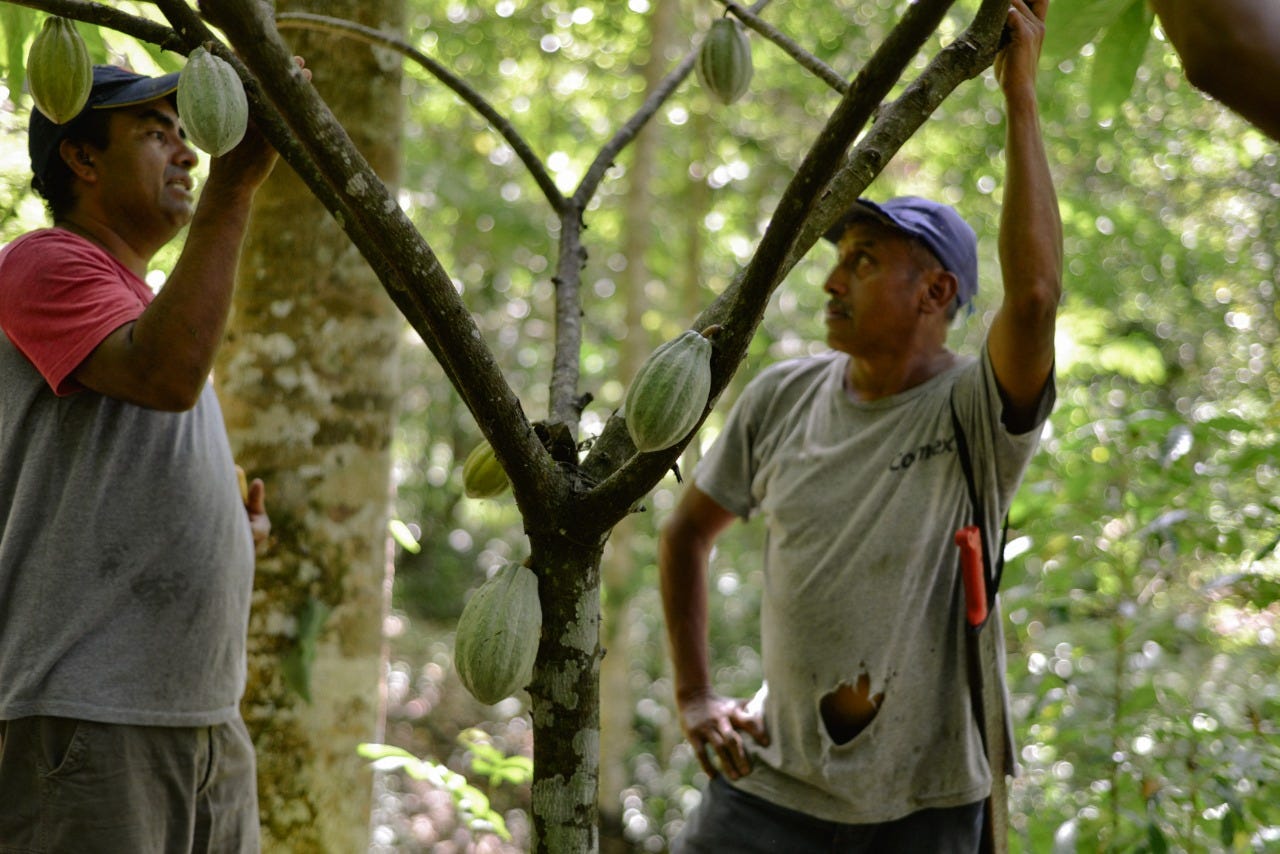
On the outskirts of the forest where cacao leans towards the edges of the village, farmers are tending to their trees, ensuring that a lineage thousands of years old is intact and fed by their willingness to remember. There is nothing overtly ceremonial about it, nothing that modern people would recognize as such, and yet, these campesinas feed the spirits of local cacao Gods and ancestors in a manner that would put modern cacao ceremonies to shame—and do. Don’t be disheartened by this. Be disciplined instead, and maybe the dead and the divine might show up once again, well-fed at the altar of your days.
This essay was originally published in Modern Farmer in October 2024. A deep bow to their work and willingness to publish Ceremonial Grade Cacao is Ceremony’s Subversion. You can also read a much older essay about my early days working with cacao and cacao producers, entitled Cacao, Community, and Comida: Journeying into the Heart of Mexico Profundo.





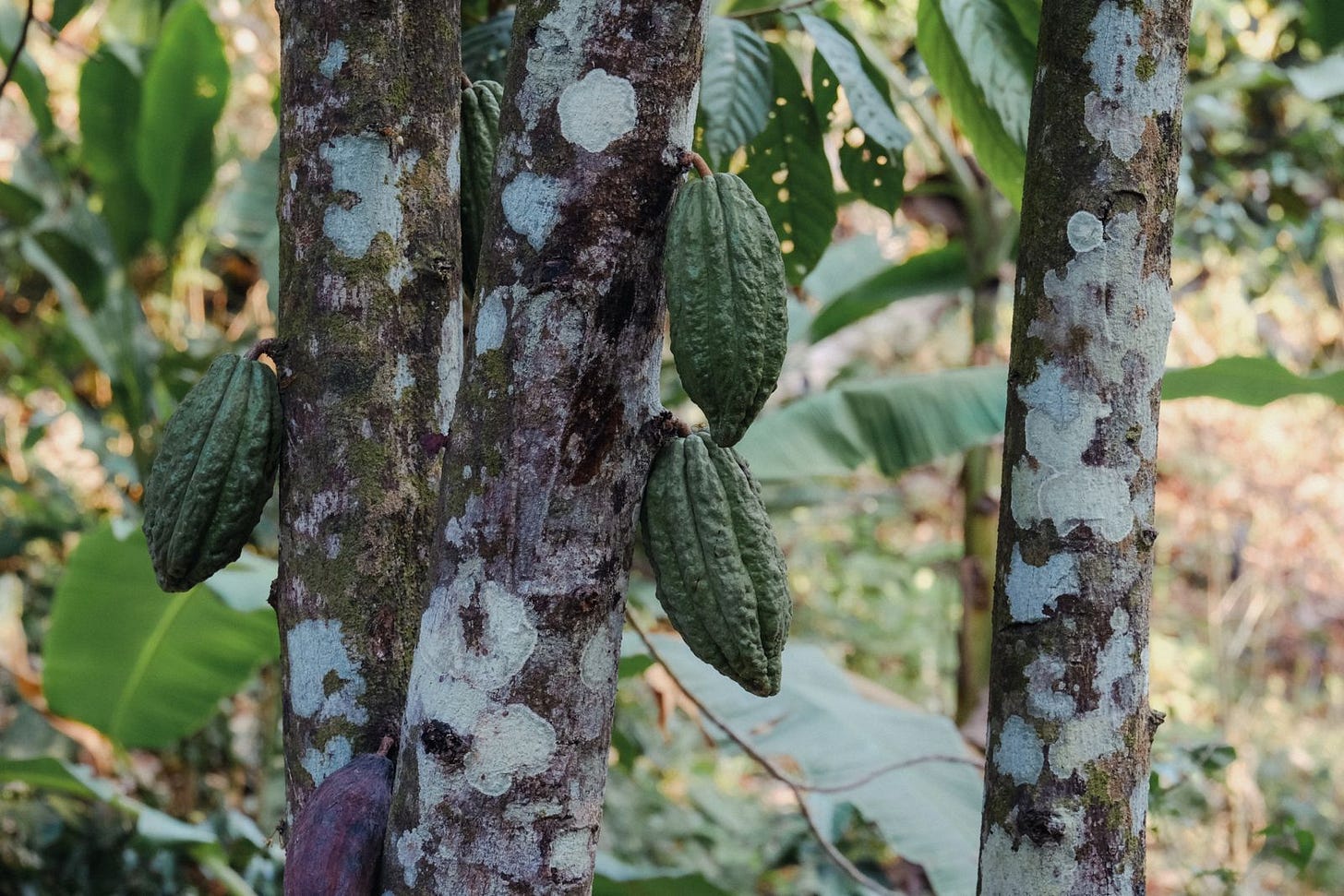
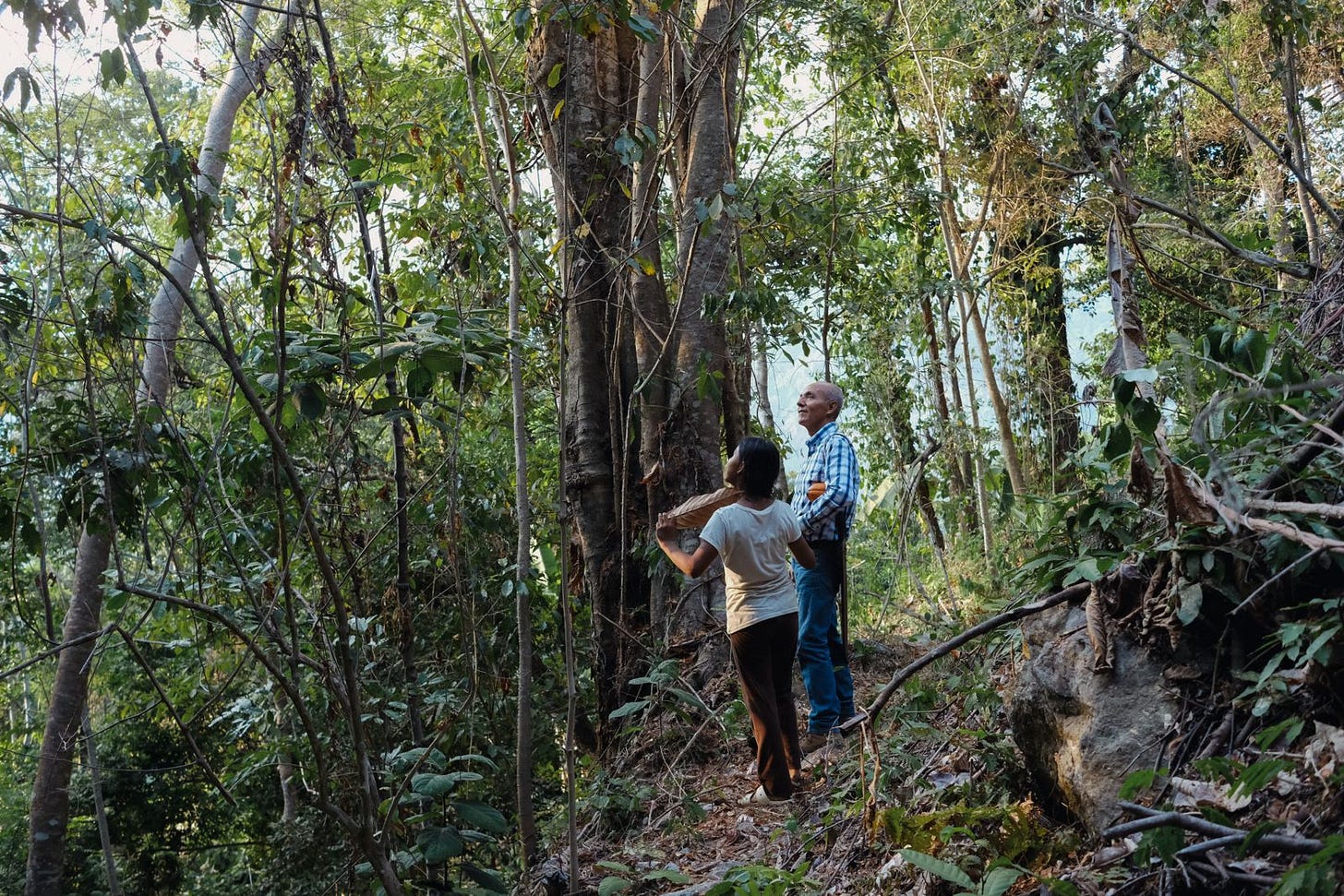
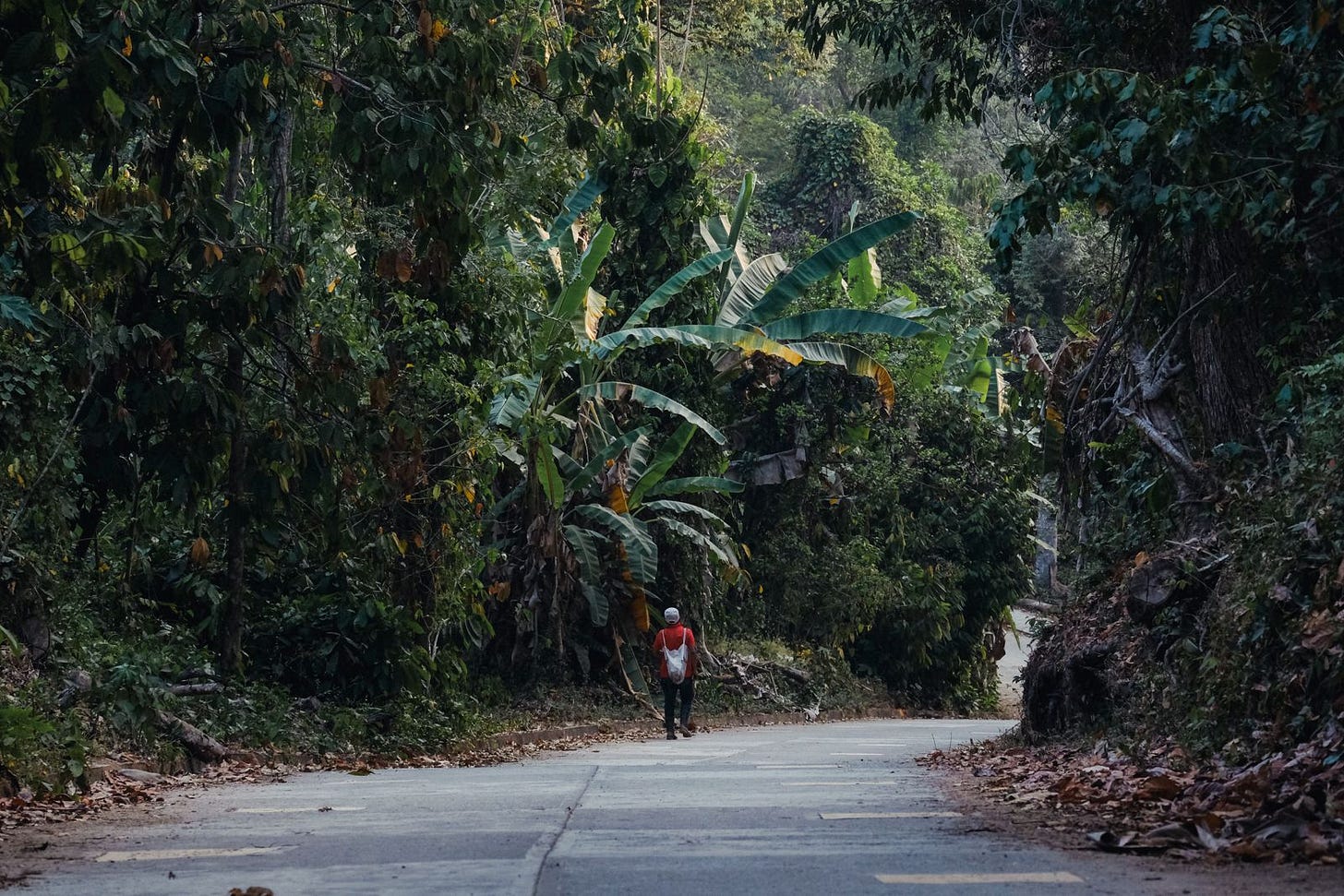
This is a wonderful article. I live in Thailand and it’s becoming more common to find a cacao ceremony than good green curry. Modern Bitcoin “shamans” are a dime a dozen these days. A very strange phenomenon indeed. This essay gives space to honor the roots. I will share this with others in an effort to keep alive what needs to live. Thankyou. All blessings.
On Point. great article Amigo, making the sacred profane, for the sake of revenue is the way of Mercantilism.